FREE BIRTH CONTROL METHODS
Every body is different. So, it’s important to find the birth control that fits you and your lifestyle best. The information below can help you make an informed decision about which method is best for you. As always, we recommend having a conversation with your health care provider.

Opill, a progestin-only daily birth control pill, is now available for purchase in our Sexual Health Vending Machine at Nebraska AIDS Project. A 30-day supply is $20.00 and a 90-day supply is $40.00. It’s safe and effective when used as directed to prevent unintended pregnancy.
Methods Options

Condom (external)
85%
Perfect Use: 98%
Lasts up to 1 use
Condom (internal)
79%
Perfect Use: 95%
Lasts up to 1 use

Diaphragm
88%
Perfect Use: 94%
Lasts up to 1 day

Emergency Contraception Pill
75%
Perfect Use: 89%
Lasts up to 1 use

Implant
99%
Perfect Use: 99%
Lasts up to 4 years
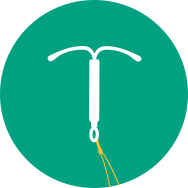
IUD (hormonal)
99%
Perfect Use: 99%
Lasts up to 7 years
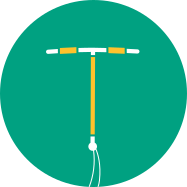
IUD (non-hormonal)
99%
Perfect Use: 99%
Lasts up to 12 years

Patch
93%
Perfect Use: 99%
Lasts up to 1 week

Pill
93%
Perfect Use: 99%
Lasts up to 1 day

Ring
93%
Perfect Use: 99%
Lasts up to 4 weeks
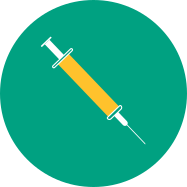
Shot
96%
Perfect Use: 99%
Lasts up to 3 months
Compare Methods
 |  |  |  | 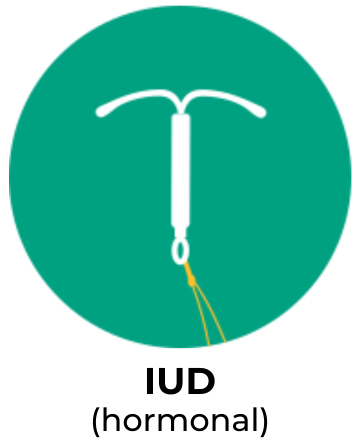 | 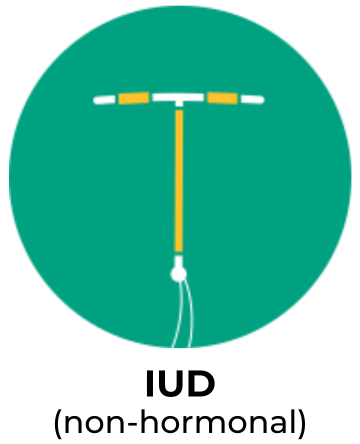 |  | 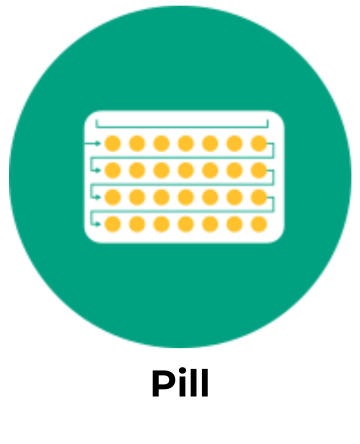 |  | 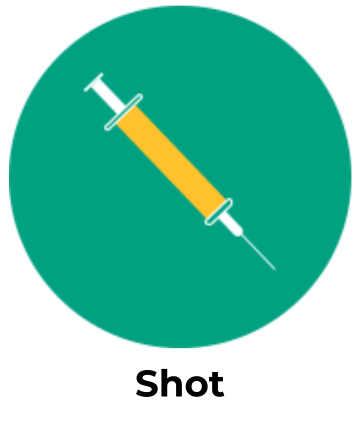 | ||
EFFECTIVENESS | 85% Perfect Use: 98% | 79% Perfect Use: 95% | 88% Perfect Use: 94% | 75% Perfect Use: 89% | 99% Perfect Use: 99% | 99% Perfect Use: 99% | 99% Perfect Use: 99% | 93% Perfect Use: 99% | 93% Perfect Use: 99% | 93% Perfect Use: 99% | 96% Perfect Use: 99% |
LASTS UP TO | 1 USE | 1 USE | 1 DAY | 1 USE | 4 YEARS | 7 YEARS | 12 YEARS | 1 WEEK | 1 DAY | 4 WEEKS | 3 MONTHS |
PREGNANCY RISK | 12% | 12% | 12% | 25% | >1% | >1% | >1% | 6% | 6% | 6% | 6% |
STI PREVENTION | |||||||||||
HORMONE-FREE | |||||||||||
APPLICATION | YOU | YOU | YOU | YOU | HEALTH CARE | HEALTH CARE PROVIDER | HEALTH CARE PROVIDER | YOU | YOU | YOU | HEALTH CARE PROVIDER |

Prevent STIs
A condom is the only method above that prevents both STIs and an unintended pregnancy. So, no matter which birth control method you choose, consider a condom, too. You can get them for free at more than 160 locations.
Find Access Near You
Condom (external)
How it Works
- The external condom fits over the penis to catch semen and body fluids after ejaculation
Types
- With or without spermicide (Note: the use of spermicides can increase your chances of contracting an STI)
- Latex or non-latex
- Non-latex types include polyurethane, polyisoprene and lambskin. (Note: lambskin condoms do not protect against HIV, HPV or Herpes)
Possible Side Effects
- Possible allergies or irritation caused by certain types, brands or lubricants
Pros
- Protects against STIs
- Easy to find and affordable
- Many types and sizes available
- May help prolong intercourse for some individuals with a penis
Cons
- Must be used perfectly, every time (pinch, place and unroll). For info on how to put on a condom, visit here
- May reduce sensitivity
- May be inconvenient
Source: Contraceptive Technology, 20th edition
Condom (internal)
How it Works
- Provides a barrier between partners
Types
- With or without spermicide (Note: the use of spermicides can increase your chances of contracting an STI)
- Latex or non-latex
- Non-latex types include polyurethane, polyisoprene and lambskin. (Note: lambskin condoms do not protect against HIV, HPV or Herpes)
Possible Side Effects
- Possible allergies or irritation caused by certain types, brands or lubricants
Pros
- Protects against STIs
- Easy to find and affordable
- Many types and sizes available
Cons
- Must be used perfectly, every time.
- May reduce sensitivity
- May be inconvenient
Source: Contraceptive Technology, 20th edition
Diaphragm
How it Works
- Inserted into vagina
- Must be used with spermicide
- Keeps sperm out of the uterus by blocking the cervix
- Spermicide kills sperm
Possible Side Effects
- Temporary skin irritation due to spermicide
- May cause urinary tract infections
- May cause reaction for those allergic to silicone or spermicide
Pros
- No hormones
- Controlled by the user and can be inserted hours before sex
- Won’t be felt by either partner
- Reusable
Cons
- May be difficult to insert
- Can move out of place during sex
- Need to remember to remove it and clean it after use
- Does not protect against STIs
Source: Contraceptive Technology, 20th edition
Emergency Contraception Pill
How it Works
- Emergency contraception can stop a pregnancy before it starts by temporarily stopping an ovary from releasing an egg
- Oral pill taken within 120 hours (5 days) after having unprotected sex
Types
- Ella, is a pill with ulipristal acetate, that you need a prescription from a health care provider
- Other pills (Plan B One Step, Take Action, My Way, AfterPill) contain levonorgestrel and can be purchased over the counter without a prescription at most drugstores and pharmacies
Possible Side Effects
- Cramping
- Upset stomach
- Vomiting
Pros
- Safe way to prevent pregnancy after unprotected sex
- Can be taken up to 5 days after unprotected sex
Cons
- Over the counter morning-after pills work best within 3 days (the sooner you take them, the better they work)
- The most effective methods, like ella, can be more difficult to get as you need to order online or have a prescription
- Plan B is less effective if you take it more than 72 hours after sex or weigh 155 pounds or more
Did You Know
- You can get $8 emergency contraception at one of our sexual health vending machines? Learn more here.
Source: Contraceptive Technology, 20th edition
Implant / Implanon
How it Works
- Releases the hormone progestin
- Prevents the ovaries from releasing eggs
- Thickens cervical mucus and prevents sperm from reaching the egg
- Removed by provider when you want to become pregnant, switch birth control method or when it is time to be removed
Possible Side Effects
-
Side effects are most common during the first 3 months of use and usually go away.
-
You may experience some or none of the following:
- Irregular bleeding or no period at all
- Acne
- Hair loss
- Headache
- Sore breasts
- Nausea
- Mood changes
- Weight gain
Pros
- Easy to use and totally private – place it and forget it
- Fewer, lighter periods
- Can be used while breastfeeding
Cons
- Bruising or tenderness at insertion site
- Irregular bleeding that can be unpredictable
- Does not protect against STIs
Source: Contraceptive Technology, 20th edition
Hormonal IUD / Mirena, Kyleena, Lileta, Skyla
How it Works
- Placed into uterus by provider
- Releases the hormone progestin
- Thickens cervical mucus and prevents sperm from reaching the egg
- May also prevent the ovaries from releasing eggs
- Makes it harder for sperm to move
- Removed by provider when you want to become pregnant, switch birth control method or when it is time to be removed
Possible Side Effects
-
Side effects are most common during the first 3 months of use and usually go away.
-
You may experience some or none of the following:
- Cramps
- Back pain
- Breast tenderness
- Headache
- Mood changes
- Hair loss
- Acne
Pros
- Safe and highly effective
- High satisfaction rates
- Easy to use and totally private — place it and forget it
- Reduces cramps and makes periods lighter or stops them completely
- Protects against endometrial cancer
- Can be used while breastfeeding
Cons
- Insertion can be uncomfortable
- Irregular bleeding or spotting in the first 3–6 months
- Does not protect against STIs
Source: Contraceptive Technology, 20th edition
Non-Hormonal IUD / Paraguard
How it Works
- Placed into uterus by provider
- Releases copper ions
- Makes it difficult for sperm to move
- Prevents sperm from meeting and fertilizing an egg
- Removed by provider when you want to become pregnant, switch birth control method or when it is time to be removed
Possible Side Effects
- Longer, heavier periods with more cramps that should subside over time, returning to your regular period
Pros
- Safe and highly effective
- High satisfaction rates
- No hormones and no hormonal side effects
- Easy to use and totally private — place it and forget it
- Protects against endometrial cancer
- Can be used while breastfeeding
- Can be inserted as emergency contraception
Cons
- Insertion can be uncomfortable
- Possible irregular bleeding or spotting and heavier, crampier periods for the first 1-3 months of use
- Does not protect against STIs
Source: Contraceptive Technology, 20th edition
Patch
How it Works
- Sticks on skin like a band aid
- Releases hormones to prevent the ovaries from releasing eggs
- Thickens cervical mucus and prevents sperm from reaching the egg
Possible Side Effects
-
Side effects are most common during the first 3 months of use and usually go away.
-
You may experience some or none of the following:
- Skin irritation
- Irregular spotting or bleeding
- Headache
- Sore breasts
- Nausea
- Mood changes
Pros
- Easy to use
- Does not fall off easily
- Reduces menstrual cramps and PMS
- Shorter, lighter periods
- May be removed for up to 3 hours
Cons
- Increased risk of blood clots, especially for smokers or individuals with other cardiovascular risk factors
- Does not protect against STIs
- Not as effective for individuals who weigh more than 198 lbs.
- Only comes in one color, light beige
Source: Contraceptive Technology, 20th edition
Pill / Opill, Ortho Evra, Xulane
How it Works
- Releases hormones to prevent the ovaries from releasing eggs
- Thickens cervical mucus and prevents sperm from reaching the egg
Possible Side Effects
-
Side effects are most common during the first 3 months of use and usually go away.
-
You may experience some or none of the following:
- Irregular bleeding, especially with missed pills
- Headache
- Sore breasts
- Nausea
- Mood changes
Pros
- Easy to use
- Reduces menstrual cramps and PMS
- Shorter, lighter periods
- Decreased risk of ovarian and endometrial cancers
- Clears up acne
Cons
- May be difficult to remember to take on time
- Increased risk of blood clots, especially for smokers or individuals with other cardiovascular risk factors
- Does not protect against STIs
Source: Contraceptive Technology, 20th edition
Ring / Nuva Ring
How it Works
- Inserted into the vagina
- Releases hormones to prevent the ovaries from releasing eggs
- Thickens cervical mucus and prevents sperm from reaching the egg
Possible Side Effects
-
Side effects are most common during the first 3 months of use and usually go away.
-
You may experience some or none of the following:
- Increased vaginal discharge
- Headache
- Sore breasts
- Nausea
- Mood changes
- Decreased interest in sex
Pros
- Reduces menstrual cramps and PMS
- Shorter, lighter periods
- May be removed for up to 3 hours
Cons
- Increased risk of blood clots, especially for smokers or individuals with other cardiovascular risk factors
- Does not protect against STIs
Source: Contraceptive Technology, 20th edition
Shot / Depo Provera
How it Works
- Can receive shot in upper arm or buttocks
- Releases hormones to prevent the ovaries from releasing eggs
- Thickens cervical mucus and prevents sperm from reaching the egg
Possible Side Effects
- Irregular bleeding
- Reversible bone thinning
- Weight gain
- Headaches
- Breast tenderness
- Depression
- Decreased interest in sex
- Rare risk of allergic reaction
Pros
- Totally private
- Shorter, lighter periods or no period at all
- Reduces menstrual cramps and PMS
- Can be used while breastfeeding
Cons
-
- Must return to provider for shot every 3 months
- Unpredictable, irregular bleeding or spotting
- Weight gain in some individuals
- May be a delay in return to regular cycle and fertility after last shot (average of 10 months)
- Does not protect against STIs
